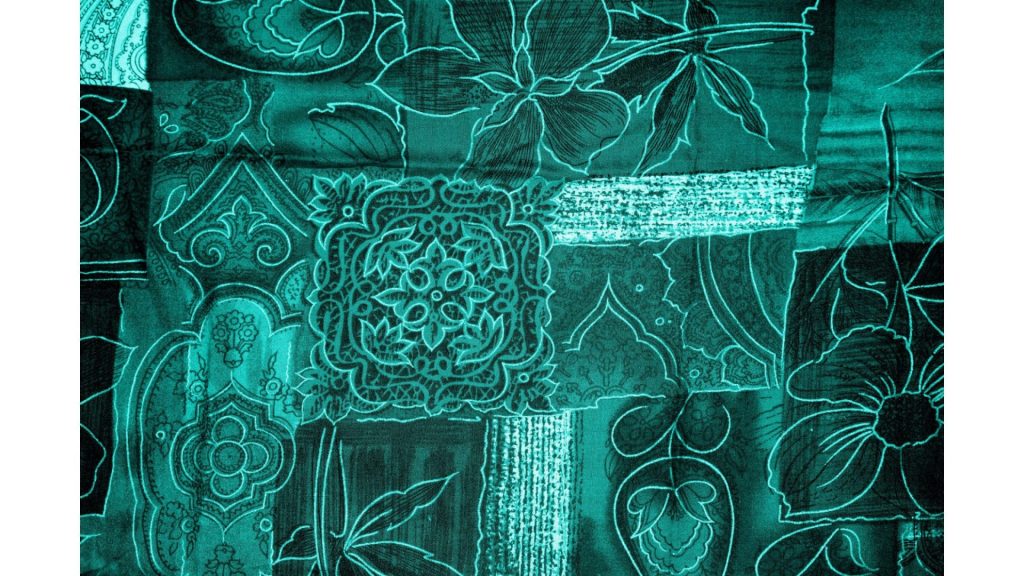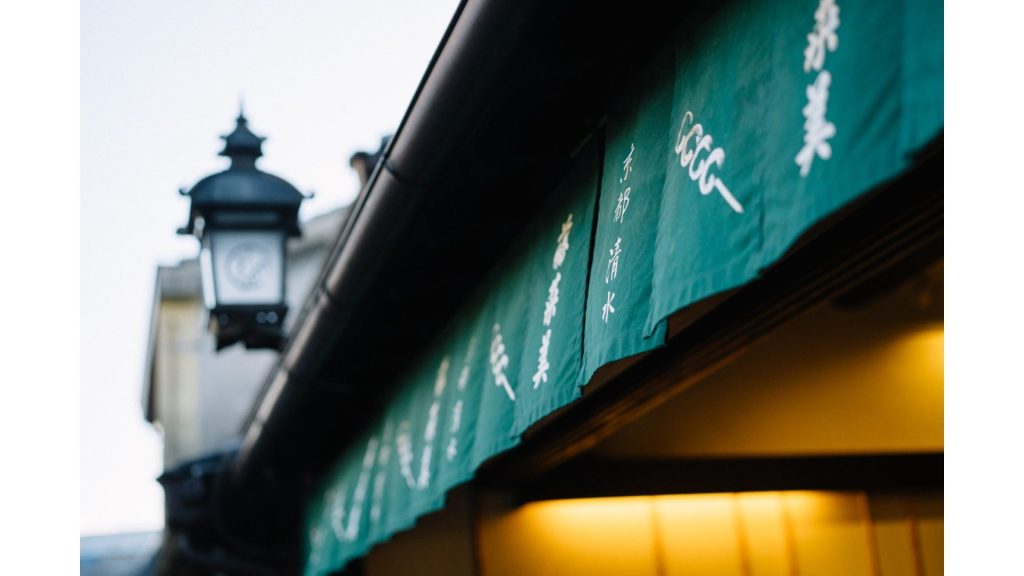History And Origin Of Noren Curtains
Noren curtains as the name suggests are traditional Japanese curtains or fabric dividers that have several panels.
Noren Curtains have a rich history and deep cultural significance in Japan.
Originating during the Heian Period, these distinctive doorway and window coverings have evolved over the centuries to become an integral part of Japanese homes and shops.
In Japan, the Noren curtain is not simply a decorative item, but a symbol of tradition and identity. Its roots can be traced back to the Nara and Heian periods, when these curtains were used to regulate the temperature of the house.
They were also used in noble households and temples to distinguish and protect sacred spaces.
During the Kamakura period, Noren curtains were used for aesthetic purposes.
Over time, they became more widely used in public spaces such as shops, restaurants, izakayas (Japanese pubs) and sentō (commercial bathhouses).
In the Edo period, Noren became a symbol for businesses. This is when colorful Noren became popular.
Customers used to wipe their hands with the Noren on their way out. The quality of restaurants was determined by how dirty the Noren was. The dirtier the better.
The design of Noren Curtains reflects the essence of Japanese architecture and traditional style.
Made from natural fabrics like cotton, linen or asa (hemp fabric), they often feature Japanese characters, traditional patterns, or scenes from nature.
The basting stitch, a special sewing technique, is used to create pleated curtains that can be easily opened or closed.
Types Of Noren Curtains
Noren curtains come in a variety of styles and designs, each with its own unique qualities and purposes. Most of the time, Noren curtains are distinguished by size.
Following are the four most popular types of Noren:
Mizuhiki Noren: These are the shortest Noren curtains. They became popular during the Kamakura period. They are 15-16 inches in length and used outside different business establishments like restaurants etc. Usually they have a business symbol or something written in Kanji on them.
Han Noren: These are 22-23 inches in length. They are hung outside shops to keep the sun and dust out.
Hiyoke Noren: These are half length Noren curtains. They are used as dividers inside shops and homes. They are also used as promotional banners.
Nara Noren: These are full length. They are used to protect from sunlight and to hide different sections.
Noren curtains can also be made from natural fabrics and feature intricate patterns inspired by traditional Japanese architecture and design.
These bold and vibrant curtains not only serve as decoration but also provide protection from dust and sun.
For those looking for a more modern twist, there are contemporary Noren that feature minimalist designs and clean lines, perfect for adding a touch of Japanese style to any space.
Whether it is for a traditional or modern setting, Noren curtains offer a visually striking and practical solution for entrances and doorways.

Traditional Japanese Characters
Traditional Japanese characters play a significant role in Noren, holding both cultural importance and symbolism.
These characters are incorporated into the design of Noren curtains to represent various aspects of Japanese culture.
Kanji, which are complex Chinese characters used in Japanese writing, and hiragana, one of the syllabic scripts in the Japanese writing system, are commonly used to write on Noren.
The use of traditional characters adds a unique and authentic touch to them. These characters are used for identification of a place.
Restaurants have their names on Noren curtains, public baths have symbols for men and women. This makes them very functional as well.
In private residences, they are often seen in entrances and doorways, acting as room dividers or simply adding a touch of Japanese style to the interior.
These curtains not only protect from dust and provide privacy, but they also serve as an artistic expression of Japanese culture and an homage to the rich heritage of the country.
Natural Fabrics Used in Noren Curtains
When it comes to Noren curtains, natural fabrics like linen, cotton and hemp are commonly used to create these beautiful and functional pieces.
Linen, known for its durability and breathability, is a popular choice for Noren.
It’s natural fibres allow for better air circulation, making it an excellent option for spaces like kitchens where good ventilation is essential.
Linen also has a soft and lustrous appearance, adding an elegant touch to any room.
On the other hand, hemp has a long history of being used in traditional Japanese textiles. This natural fabric is known for its strength and resilience, making it a suitable choice for Noren curtains in high-traffic areas.
Hemp is also highly resistant to mould and mildew, making it ideal for moisture-prone spaces. Its eco-friendly nature adds to its appeal as well.
Cotton is also used to make Noren. It is a great insulator and also an eco friendly choice.
All three fabrics used in Noren curtains have their own unique benefits and characteristics.
Polyester Noren curtains are also becoming popular. They are fade resistant. However, they are not traditional nor eco-friendly.
Tapestry-Like Curtain Designs

Tapestry is a form of textile art that involves weaving together different colored threads to create a picture or design.
Tapestry-like designs are a prominent feature of Noren curtains, showcasing intricate patterns and artistic details that capture the essence of Japanese culture.
These designs often depict traditional Japanese landscapes, nature scenes, or cultural symbols, bringing a touch of authenticity and charm to any space.
The tapestry-like designs on Noren are meticulously crafted, with careful attention paid to every detail.
From delicate blossoms and serene gardens to majestic mountains and flowing rivers, these designs transport you to the serene beauty of Japan.
Cultural symbols such as the iconic cherry blossoms, dragons, or koi fish are also commonly featured, adding a touch of symbolism and cultural significance.
These tapestry-like designs not only serve as decorative elements but also add visual interest to the curtains.
Their intricate patterns and vibrant colours become focal points in any room, instantly enhancing the overall aesthetics.
Whether used in homes, offices, or restaurants, these designs create a captivating and inviting ambiance.
Ancient Japanese Style Curtain Design
Dating back centuries, Noren curtains have been an integral part of traditional Japanese architecture.
Made from natural fabrics and featuring intricate patterns, these curtains add a touch of elegance and charm to any space.
The designs often depict traditional Japanese motifs such as cherry blossoms, dragons, or koi fish, symbolizing themes of nature and good fortune.
Noren curtains are widely used for both decorative and functional purposes. In homes, they are hung in doorways or windows, adding character and privacy to rooms.
In public spaces and restaurants, they are used to demarcate areas or provide a sense of privacy.
Their versatility and beauty have made them popular in Japanese shops, public baths, ramen restaurants, and even sushi counters.
The ancient Japanese style curtain design is not just a window covering; it is a representation of Japan’s cultural heritage.
With its intricate patterns, natural fabrics, and historical significance in traditional Japanese architecture, Noren curtains bring a touch of tradition and elegance to any space.
Uses For Noren Curtains
Noren curtains have various uses and can be found in a range of settings, from traditional Japanese homes to modern establishments.
These beautiful and functional curtains are not only used for adding a touch of elegance to doorways and windows but also serve practical purposes. Some of these are mentioned below.
1. Protection from Sun and Dust at Entrances
In Japan, Noren curtains have been a staple in shops and restaurants for centuries, providing both practical protection and stylish decoration.
Their first use during the Heian period was to shield homes from sun and dust.
They also regulate the temperature and keep the rooms warm in the winter and cool in summer.
Japanese shops often hang Noren curtains at their entrances to protect the interior space from the sun’s heat and harmful UV rays.
By creating a barrier between the outside world and the shop’s interior, Noren curtains help maintain a cool and comfortable atmosphere for customers.
Whether it’s a quaint local shop or a sophisticated restaurant, Noren curtains provide a practical and decorative solution for protecting entrances from the sun and dust.
Their timeless charm continues to make them a popular choice in Japanese establishments, adding a touch of elegance and flair to any space.
2. Keeping Houses Cool During Hot Summers
One effective way to keep houses cool during hot summers is by using Noren curtains.s.
Noren curtains are typically made from natural fabrics, such as cotton or linen, allowing proper ventilation.
This means that air can easily pass through the curtain, creating a cooling effect in the interior space.
Additionally, these curtains provide shade by blocking direct sunlight from entering the house.
Noren curtains can be hung in doorways or windows to maximize the cooling effect. By doing so, they serve as a barrier that prevents the sun’s rays from penetrating and heating up the house.
The breathable fabric of the curtains allows fresh air to flow freely, making the indoor environment more comfortable.
In Japanese architecture, Noren curtains have been used for centuries to protect against the harsh summer heat.
With their natural fabrics and ability to provide shade and ventilation, Noren curtains are a practical and stylish solution for keeping houses cool during hot summers.
3. Provide Privacy In Public Spaces
These curtains are commonly used in various establishments, including shops, restaurants, and public baths, to create a sense of privacy and separation between public and private areas.
In Japanese culture, privacy is highly valued, and Noren curtains play a crucial role.
They are typically hung at the entrance of a space, creating a visual barrier that provides privacy while still allowing for a degree of interaction.
These curtains often feature Japanese characters, traditional motifs, or vibrant designs that reflect the establishment’s identity or theme.
In shops, Noren curtains signal that the establishment is open for business.
Similarly, in restaurants, Noren curtains are used to separate dining areas or enclose sushi counters and ramen stalls, providing privacy for customers and staff.
4. Creating Intimacy In Ramen Restaurants Or Sushi Counters
Noren curtains are a traditional part of Japanese culture and are often used in various settings, including ramen restaurants and sushi counters, to create a sense of intimacy and exclusivity.
In ramen restaurants, Noren curtains are hung to separate the eating area from the kitchen or preparation area.
This provides privacy for the customers and adds to the overall ambiance of the space.
The curtain acts as a visual barrier, creating a cozy and intimate environment where customers can enjoy their meals without distractions.
The soft fabric of the curtain absorbs sound, further enhancing the feeling of being in a personal and secluded space.
Similarly, in sushi counters, Noren curtains enclose the counter area, creating a sense of exclusivity for customers.
This creates a more intimate dining experience, where customers can interact with the sushi chef and observe their food preparation up close.
The Noren curtain provides a visual separation from the rest of the restaurant, allowing customers to feel like they are in their own private space.
During the Edo period, Noren curtains were traditionally used in sushi shops to signify authenticity.
By displaying a Noren curtain, the shop indicated they were serving authentic, high-quality sushi.
This practice continues today, as Noren curtains are commonly seen in traditional sushi establishments, adding to the sense of heritage and tradition.



Konnichiwa! (Hello!) I'm Pat Tokuyama, a Japanese tofu cookbook author, who travels for music, food, and adventure. If you like Japanese tea, checkout some of the newestorganic japanese tea, matcha bowls and noren and more!
** Curious about the Plant Based Japanese Cooking Club? ** Learn more here!
5. Decorate Doorways To Create A Homey Feel
Decorating doorways with Noren curtains is a great way to create a warm and homey feel in your living space.
Not only do these traditional Japanese curtains add a touch of style and elegance, but they also offer several practical benefits.
One of the key advantages of using Noren curtains is their ability to hide clutter. By hanging these curtains in doorways, you can conceal any unsightly mess or storage areas, instantly making your space appear cleaner and more organized.
This is especially useful for doorways leading to areas like closets or utility rooms.
In terms of design options, there are numerous Noren curtain designs and colours available to suit your home’s overall theme and vibe.
From vibrant patterns depicting nature scenes to simple, minimalist designs, you can find a Noren curtain that complements your existing decor.
Opting for colors that match your interior palette can create a cohesive and harmonious look.
Noren curtains can do the trick for those looking to add a vintage or fancier touch to their home.
Selecting curtains with intricate patterns, floral motifs, or traditional Japanese characters can give your space a unique and nostalgic feel.
In conclusion, using Noren curtains to decorate doorways adds an aesthetic appeal to your home and offers practical benefits such as hiding clutter and creating a cleaner look.
With a wide range of designs and colors to choose from, you can easily infuse a homey feel into your living space with these charming curtains.
How To Hang A Noren Curtain
Hanging a Noren curtain is a simple and effective way to add a touch of Japanese style to your home.
Follow these step-by-step instructions to hang a Noren curtain in your doorway or window. Measure the space: Start by measuring the width and height of the doorway or window where you plan to hang the Noren curtain. This will ensure a proper fit and prevent any gaps or overlaps.
Choose the curtain rod or hooks: Depending on the design of your Noren curtain, you can use either a curtain rod or hooks to hang it. Select a rod that matches the width of your doorway or window, or choose hooks that are strong enough to support the curtain.
Install the rod or hooks: Install the curtain rod or hooks according to the manufacturer’s instructions. Make sure they are securely attached to the wall or door frame.
Attach the Noren curtain: Slide the Noren curtain onto the rod or hooks. Adjust the curtain to the desired height, ensuring it hangs evenly and covers the entire doorway or window.
Secure the curtain: Use additional hooks or tiebacks to prevent the curtain from moving in the breeze. This will help maintain the desired appearance and prevent any disruptions.
By following these simple steps and taking precise measurements, you can easily hang a Noren curtain, transforming your space with a touch of Japanese charm.







Konnichiwa! (Hello!) I'm Pat Tokuyama, a Japanese tofu cookbook author, who travels for music, food, and adventure. If you like Japanese tea, checkout some of the newestorganic japanese tea, matcha bowls and noren and more!
** Curious about the Plant Based Japanese Cooking Club? ** Learn more here!